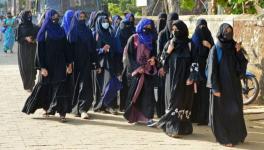Muslims Enter Education System but lag in Retention
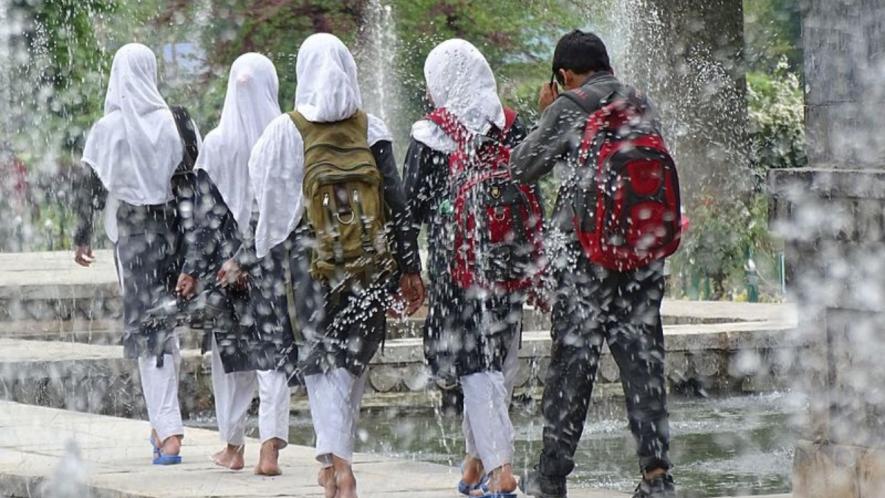
Representational image. | Image courtesy: Wikimedia Commons
Dropping out of school is a persistent challenge in the path of Muslimsseeking education in India. This trend is revealed afresh in a report prepared by Prof Arun Mehta, formerhead of the Department of Educational Management Information System at the National University of Educational Planning and and Administration or NIEPA.
Mehta has analyse the data available from the Unified District Information System for Education or UDISE and the All India Survey on Higher Education (AISHE)and found thatthe increase in new Muslim student enrolment is at only 1.29 percentage points. The share of Muslim enrolment in the total enrolment in primary classes (I-V) was 15.62% in 2021-22, a slight increase from 14.20% in 2012-13.
However, based on their share of enrolment in higher secondary, the possibility of Muslim students continuing their education has increased by 2.52 percentage points. In 2012-13, 8.27% students in classes XI and XII were Muslim, which gradually increased to 10.76% in 2021-22.
Therefore, there is a significant gap between the share in enrolment of Muslim students in the primary sections compared with the senior sections.
Indeed, the share of Muslim enrolment over total enrolment in 2021-22 aligns with its share in the population recorded in the 2011 Census, at 14.31%. However, this share can only be attributed to the presence of Muslim children in primary and upper primary sections—after all, the share of Muslims enrolled in schools decreases as the level of education rises.
To sum up, there hasbeen a gradual increase in retention of Muslim students but the significant drop-out rate alsopersists.
The lower share of Muslim children in secondary classes(IX-X) compared with primary and upper primary classes indicates that Muslim children are more likely to drop out before clearing the class V to class VIII level.
For instance, in 2021-22, the share of Muslim children in primary, upper primary, secondary, and higher secondary was at 15.62%, 14.41%, 12.61%, and 10.76% respectively.
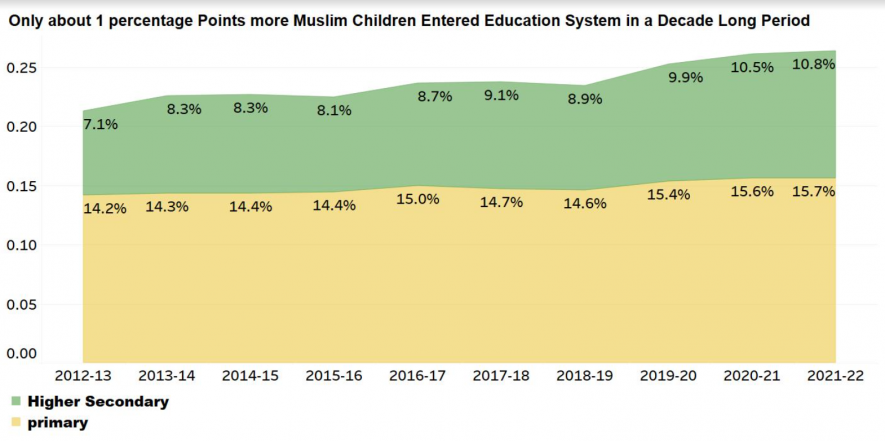
The picture in Indian states looks much the same (with a minimal disparity in in Kerala) if one were to exclude Muslim-majority State Jammu and Kashmir and the Union Territory of Lakshadweep.
India’s Muslim population is largely concentrated in Assam, West Bengal, Bihar, Kerala, and Uttar Pradesh. Based on the 2011 Census data, Prof Mehta’s report finds that 58% of thecountry’s 17.22 crore Muslims live in these fivestates.
The report also observes that across all states and Union Territories, the percentage of Muslim children enrolled in higher secondary education is lower than in all other levels of education. This may indicate drop-outs in enrolment at this level. The data also shows that the percentage of Muslim children enrolled in primary to higher secondary schooling is generally higher than those enrolled in secondary education (Grades IX-X). This data suggests that many Muslim children enrol in primary education but do not continue their education beyond, leading to thefall in enrolment in subsequent classes.
We can conclude that these states play a significant role in determining India’s overall performance in terms of the education of Muslims. All five states have shown a decrease in the share of Muslim children as the level of education rises. It means the trend of dropping out remains constant despite the high share of Muslims in the population.
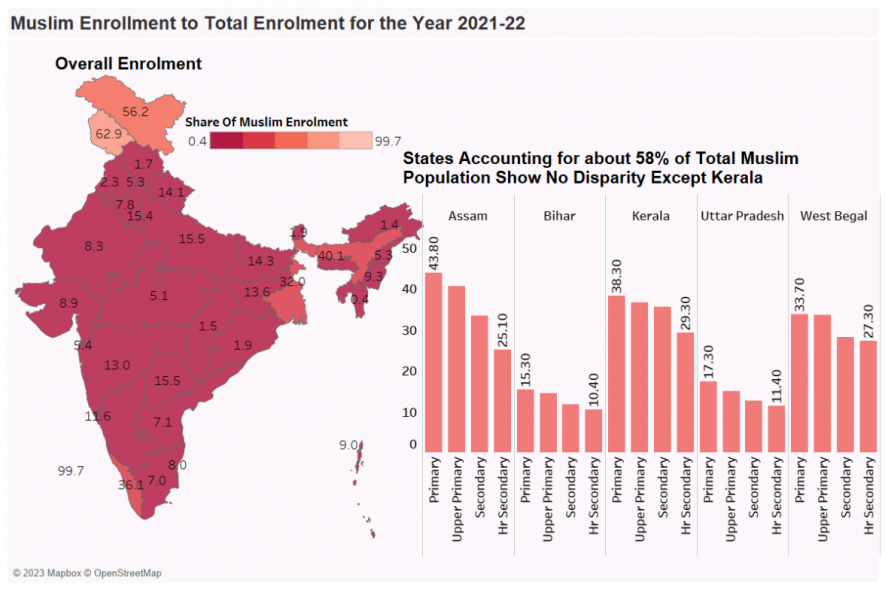
The report addresses gender parity, which consistently stood at 0.93% for overall enrolment from primary to higher secondary between 2012-13 and 2021-22. The ratio remained at 1 or above for the Muslim community, with a singular exception in 2021-22 when it slightly decreased to 0.99.
The persistently low gender parity index at the primary level among the Muslim community indicates that fewer girls enter the education system. Or it could indicate that they drop outbefore finishing their primary schooling.
But another important takeaway from the gender parity trend is that if a Muslim girl does enter the education system,she is more likely to continue her education compared to Muslim boys.
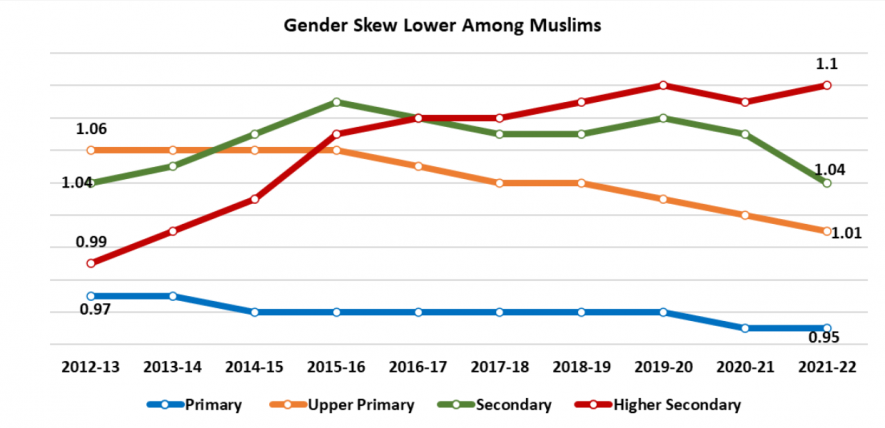
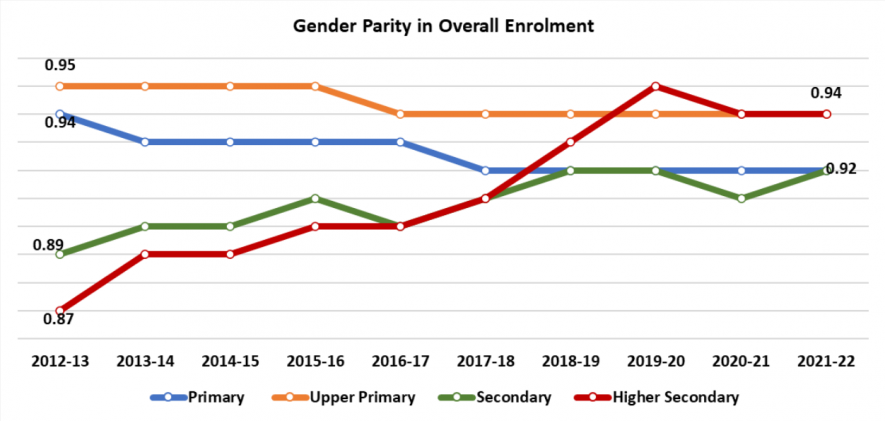
Enrolment in higher education among Muslims dropped by 0.81 percentage points from 5.45 in 2019-20 to 4.64 in 2020-21. Further, the drop-out rate was higher among male students (0.83 percentage points) against a female drop out rate of 0.78 percentage points. The year 2020-21was exceptional, whenthe total number of Muslim students in higher education dropped by 8.53%. This was a steep drop from 21,00,860 in 2019-20 to 19,21,713 in 2020-21.
The decline in 2020-21 may be attributed to theimmediate aftermath of the COVID-19 pandemic, given the otherwise consistent rise in the share of Muslim students in total enrolment.
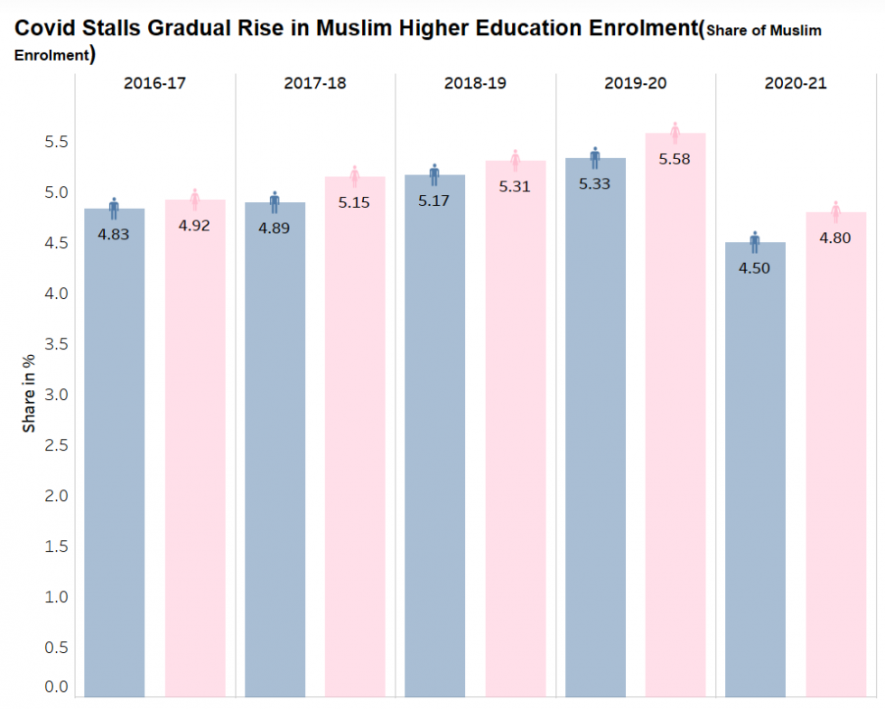
The author is an independent journalist. The views expressed are personal.
Get the latest reports & analysis with people's perspective on Protests, movements & deep analytical videos, discussions of the current affairs in your Telegram app. Subscribe to NewsClick's Telegram channel & get Real-Time updates on stories, as they get published on our website.









